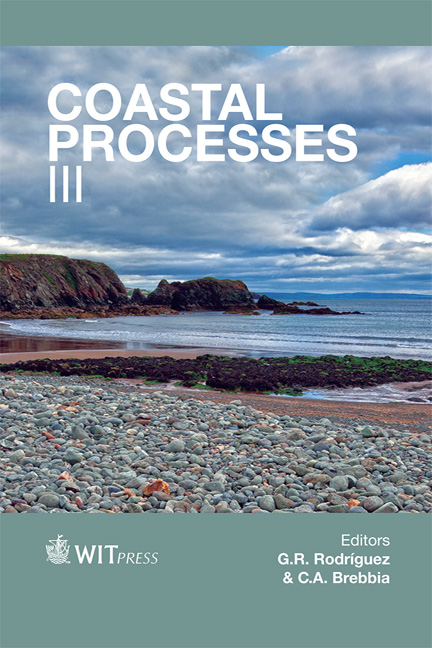Tracing Fine-grained Sediment Transport Around Tokyo Bay Using Cesium-134 And Cesium-137 Originating From Fukushima Daiichi Power Plant
Price
Free (open access)
Transaction
Volume
169
Pages
11
Page Range
191 - 201
Published
2013
Size
587 kb
Paper DOI
10.2495/CP130171
Copyright
WIT Press
Author(s)
Y. Koibuchi
Abstract
Coastal sediment transport, which consists of suspended-load and bed-load, has not been fully understood, since bed-load transport of cohesive sand is difficult to observe. The impact on the total amount of fine-grained cohesive sediment has not been elucidated. Cesium-134 and cesium-137 were spread from the Fukushima Daiichi Nuclear Power Plant (FDNPP) after the earthquake of March 11 of 2011, and attached to the fine-grained sand on the land. The contaminated sand flowed into the coast through the rivers possibly due to the complex physical processes in coastal areas. To quantify the fine-grained sediment transport around Tokyo Bay and inside the bay, field observation was carried out by radionuclide originated from FDNPP as an effective tracer. We successfully quantified the cohesive sediment transport in Tokyo Bay, and found that the cohesive sediment transport deposited in the estuary is greatly dependent on the land use, geometry, river discharge and salinity. In addition, the transport driven by the rainfall was minute, and its behavior was quite different from suspended solids. Although further field observations of radionuclide are necessary, it is clear that fine-grained sediment in the bay from rivers already settled on the river mouth by aggregation. The settled sand will not move even in rainfall events. Also, the transport of radionuclide to the Pacific Ocean may not occur. Keywords: sediment transport, cesium, bedload, suspended load, Fukushima Daiichi Nuclear Power Plant, Tokyo Bay.
Keywords
sediment transport, cesium, bedload, suspended load, FukushimaDaiichi Nuclear Power Plant, Tokyo Bay.





